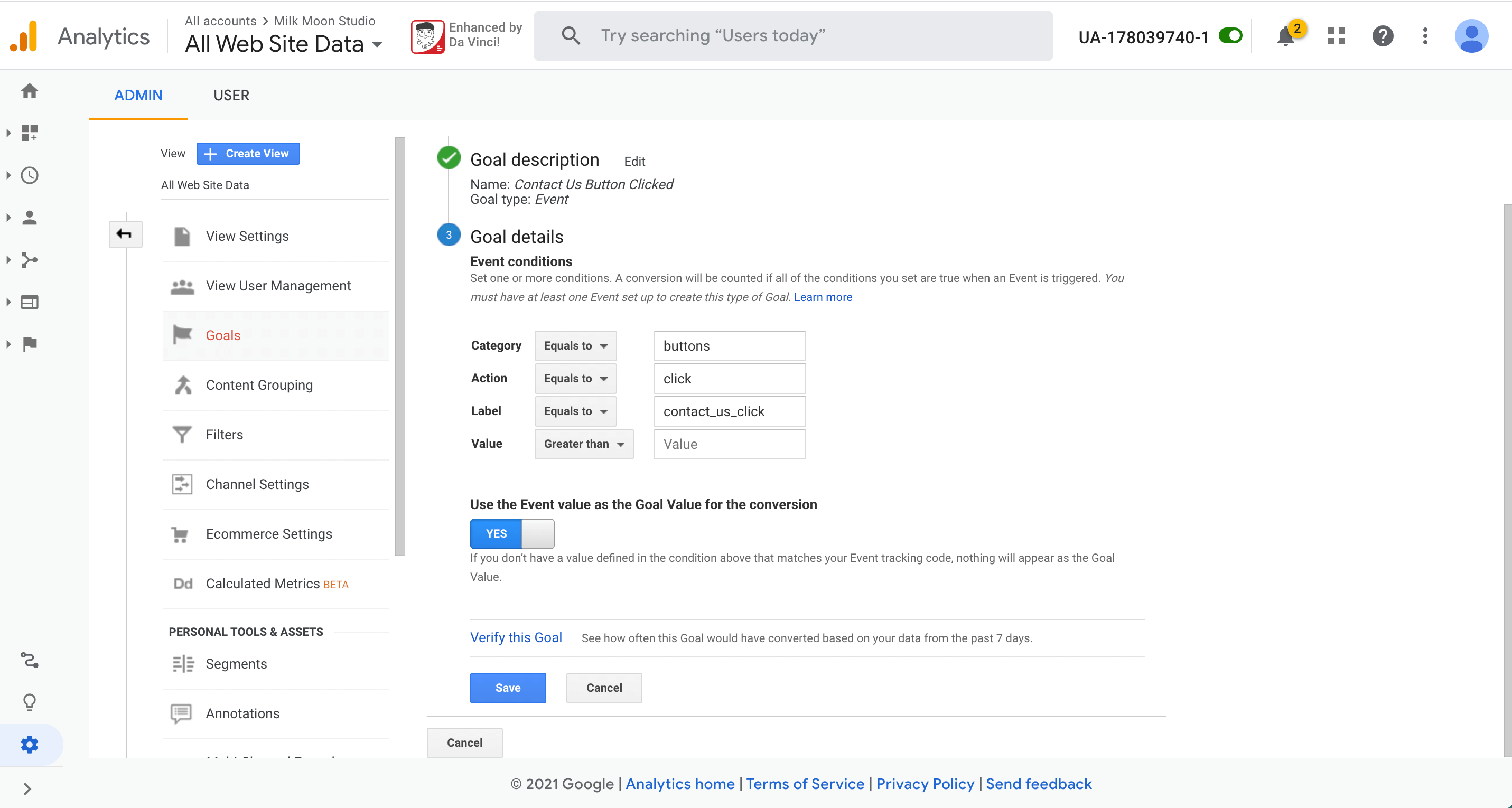Discover What Data Is Google Analytics Goals Unable to Track
Discover What Data Is Google Analytics Goals Unable to Track
Blog Article
Discover the Limitations of Google Analytics Goals: Revealing the Data Kind That Remain Untrackable
As organizations progressively count on data-driven decision-making, understanding the limitations of devices like Google Analytics becomes paramount. While Google Analytics Goals deal useful insights into user interactions, there exist information types that elude monitoring, positioning obstacles to a thorough understanding of user habits. These untrackable data types question regarding the precision and efficiency of the analytics data that organizations greatly trust for their electronic strategies. Curious to discover the surprise blind spots in your information evaluation procedure?
Incomplete Individual Trip Tracking
Incomplete customer journey tracking within Google Analytics can hinder the capability to precisely analyze user behavior. When the individual trip is not totally tracked, there are voids in the information that prevent a comprehensive understanding of how users communicate with a web site. This lack of insight can bring about missed out on possibilities for optimization and renovations to the customer experience.
One typical problem with incomplete user trip monitoring is the failure to see the full path that users take before completing an objective or leaving the website. Without this info, it is testing to determine where customers might be experiencing challenges or rubbing points that prevent them from transforming. Furthermore, incomplete tracking can cover the influence of specific advertising and marketing initiatives or site changes on user actions.
To resolve this restriction, it is important to establish appropriate tracking mechanisms within Google Analytics to capture the whole user trip. This might entail setting up event tracking, goal funnels, or making use of devices like Google Tag Manager to make certain that no crucial interactions go unrecorded. By gaining an extensive sight of the user trip, site proprietors can make more educated decisions to improve customer interaction and drive conversions.
Acknowledgment Difficulties
Browsing through acknowledgment challenges in Google Analytics needs a comprehensive understanding of just how different touchpoints add to the overall conversion process. Attribution obstacles emerge from the intricacy of contemporary customer journeys, where users engage with multiple channels prior to converting. Google Analytics offers different acknowledgment designs like very first touch, last touch, and linear, each providing a various perspective on exactly how credit is designated to touchpoints along the conversion path. These versions may not constantly properly reflect the true effect of each touchpoint on the conversion.
One common attribution challenge is the problem in associating conversions to the right resource, specifically in instances where customers connect with numerous networks before converting. This can result in mistakes in figuring out which advertising and marketing initiatives are driving one of the most conversions. Furthermore, cross-device monitoring presents one more attribution challenge, as users usually switch between tools throughout their trip, making it testing to track their communications seamlessly. Online marketers should carefully analyze and analyze acknowledgment information to make educated decisions and optimize their marketing approaches properly.
Offline Conversions
Offered the difficulties related to associating conversions properly in online networks, the dimension of offline conversions provides a significant possibility for marketing professionals seeking helpful resources a much more detailed understanding of their customers' journey. Offline conversions describe actions that consumers take in the real world, such as making acquisitions in brick-and-mortar shops or over the phone, going to events, or engaging with published products - what data is google analytics goals unable to track. These conversions are crucial for companies that run both online and offline, as they provide important understandings right into the effectiveness of advertising and marketing projects across different touchpoints
Tracking offline conversions commonly positioned a substantial difficulty for marketers, as it was challenging to link these activities back to certain on-line communications accurately. However, with improvements in modern technology, such as the assimilation of CRM systems, unique identifiers, and voucher codes, organizations can currently link the void in between online and offline data to acquire a much more alternative sight of client actions. By efficiently measuring offline conversions, online marketers can enhance their methods, allot resources much more efficiently, and eventually enhance the total consumer experience.
Cross-Device Tracking
Cross-device tracking plays a crucial duty in understanding the interconnected nature of customers' digital communications across numerous devices. In today's omnichannel globe, where users flawlessly change in between desktop computers, mobile phones, and tablet computers, tracking their behavior across these tools is important for marketers to get a comprehensive view of their consumer trip.

In addition, privacy issues and laws such as GDPR and CCPA have even more challenging cross-device monitoring. With individuals requiring even more control over their data and enhanced limitations on tracking innovations, marketing professionals have to locate privacy-compliant and cutting-edge means to attach customer communications throughout gadgets.
Dynamic Material Interaction
Comprehending individual interaction with dynamic content Discover More Here is critical in optimizing electronic marketing strategies for enhanced target market communication. Dynamic material refers to site aspects that alter based on customer actions, choices, or other factors, supplying an individualized experience. Nevertheless, tracking user communications with dynamic content presents difficulties for conventional analytics devices like Google Analytics.
While Google Analytics can track fundamental communications like clicks and page views, it may struggle to record more nuanced interactions within dynamic material. what data is google analytics goals unable to track. Metrics such as time invested on particular vibrant aspects, float actions, or communications within pop-ups are often not quickly quantifiable making use of conventional tracking approaches. This limitation impedes marketing professionals' ability to completely grasp exactly how users are engaging with dynamic content and customize their strategies appropriately

Verdict
Finally, Google Analytics objectives have constraints in tracking insufficient user journeys, attributing conversions accurately, catching offline conversions, tracking cross-device interactions, and determining dynamic content engagement. These constraints highlight the significance of discovering added monitoring methods and tools to get a much more thorough understanding of user behavior and conversions beyond what Google Analytics can supply.
While Google Analytics Goals deal beneficial understandings into user communications, there exist information types that avoid tracking, presenting obstacles to a comprehensive understanding of user behavior.Incomplete user journey tracking within Google Analytics can hinder the capacity to properly examine individual behavior. When the user trip is not completely tracked, there are spaces in the data that prevent a comprehensive understanding of just how individuals communicate with a web site.One typical issue with insufficient individual trip tracking is the inability to see the complete path that users take before finishing an objective or leaving the website. By obtaining a thorough view of the user journey, internet site owners can make more educated decisions to enhance customer engagement and drive conversions.
Report this page